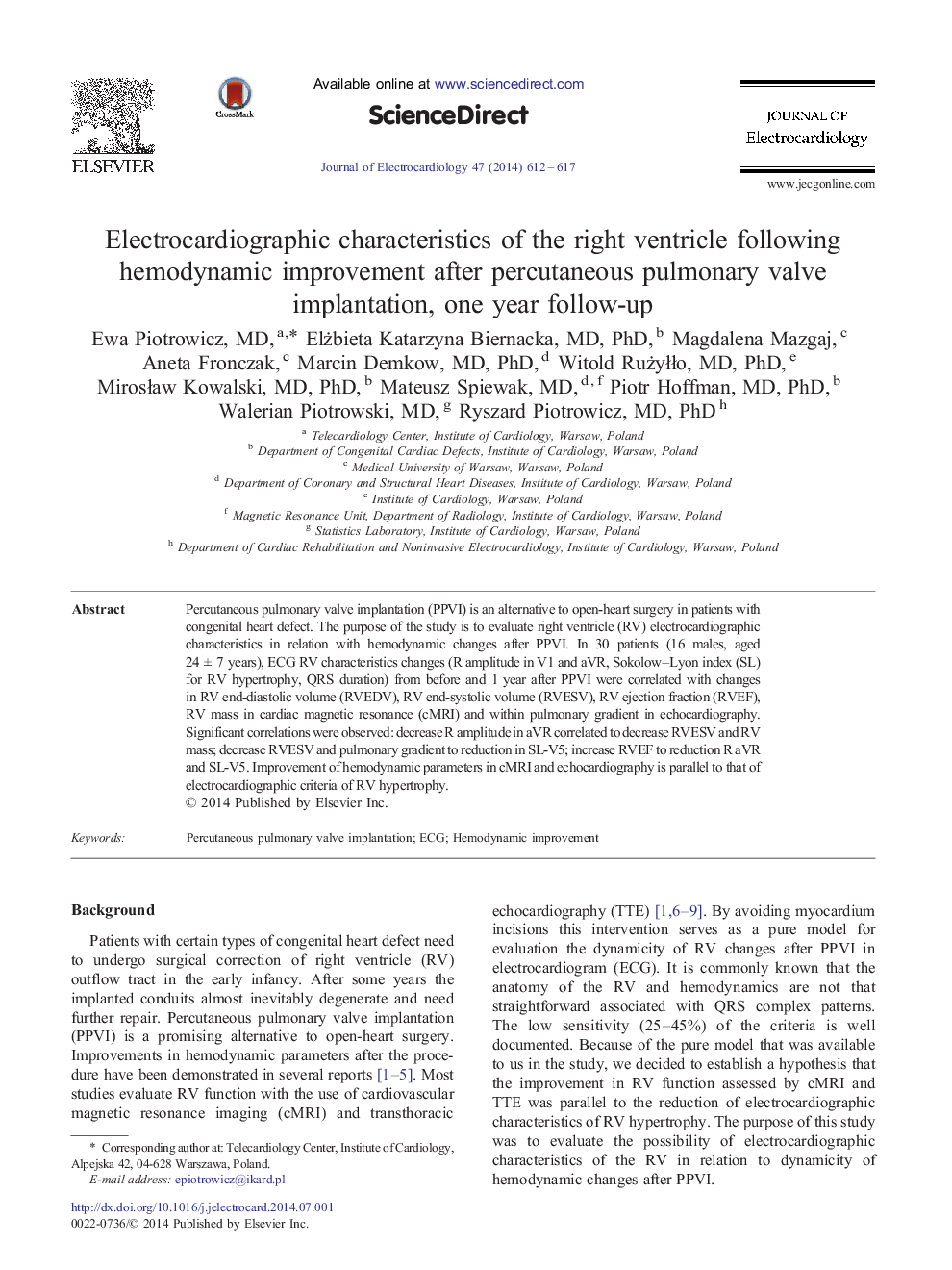| Article ID | Journal | Published Year | Pages | File Type |
|---|---|---|---|---|
| 2967416 | Journal of Electrocardiology | 2014 | 6 Pages |
•We evaluate right ventricle (RV) electrocardiographic characteristics in relation with hemodynamic changes after percutaneous pulmonary valve implantation (PPVI) at one year follow-up.•PPVI led to statistically significant reduction in all RV hypertrophy electrocardiographic characteristics.•Improvement of hemodynamic parameters in cardiac magnetic resonance and echocardiography is parallel to that of electrocardiographic criteria of RV hypertrophy.
Percutaneous pulmonary valve implantation (PPVI) is an alternative to open-heart surgery in patients with congenital heart defect. The purpose of the study is to evaluate right ventricle (RV) electrocardiographic characteristics in relation with hemodynamic changes after PPVI. In 30 patients (16 males, aged 24 ± 7 years), ECG RV characteristics changes (R amplitude in V1 and aVR, Sokolow–Lyon index (SL) for RV hypertrophy, QRS duration) from before and 1 year after PPVI were correlated with changes in RV end-diastolic volume (RVEDV), RV end-systolic volume (RVESV), RV ejection fraction (RVEF), RV mass in cardiac magnetic resonance (cMRI) and within pulmonary gradient in echocardiography. Significant correlations were observed: decrease R amplitude in aVR correlated to decrease RVESV and RV mass; decrease RVESV and pulmonary gradient to reduction in SL-V5; increase RVEF to reduction R aVR and SL-V5. Improvement of hemodynamic parameters in cMRI and echocardiography is parallel to that of electrocardiographic criteria of RV hypertrophy.
